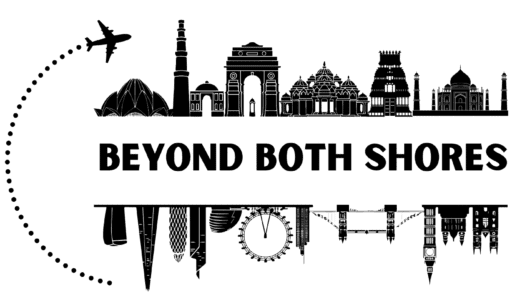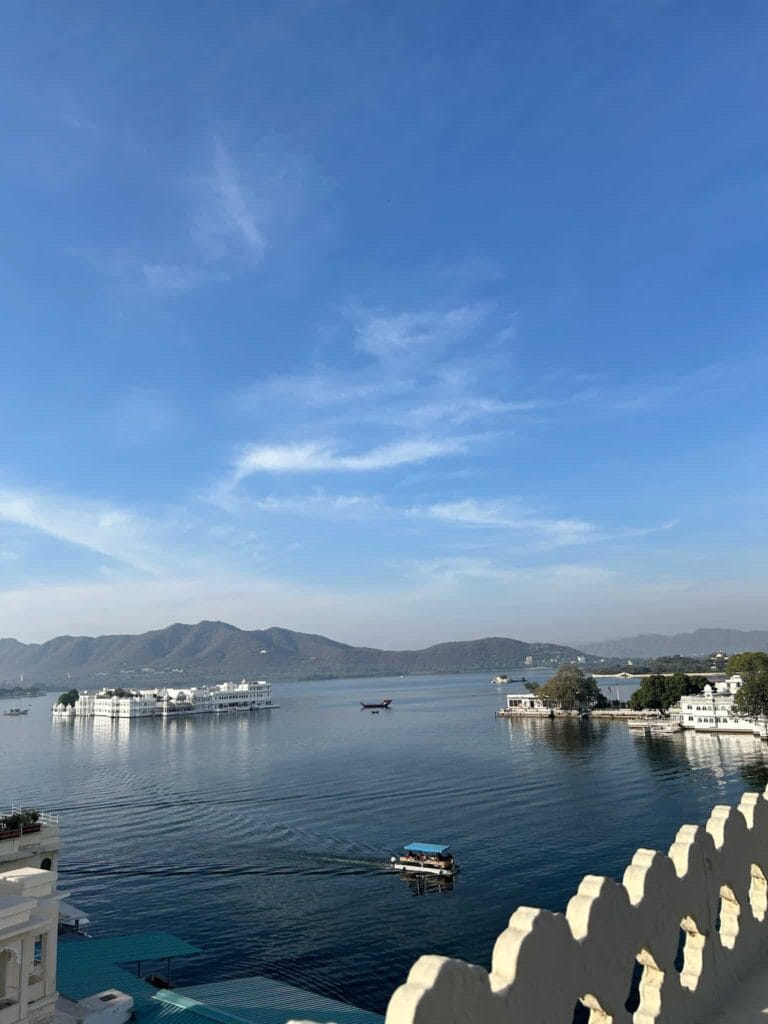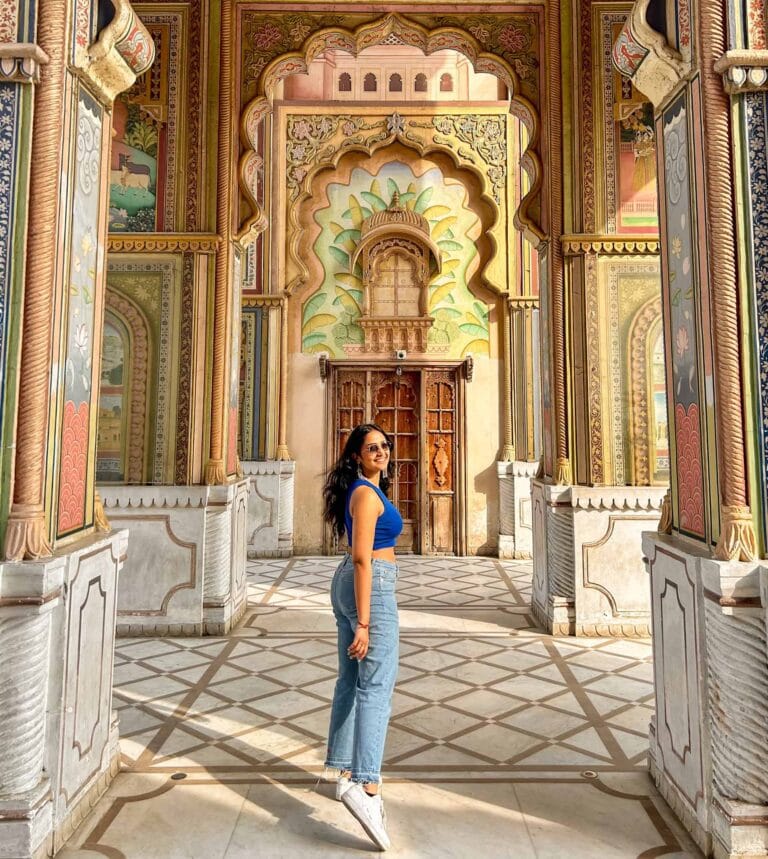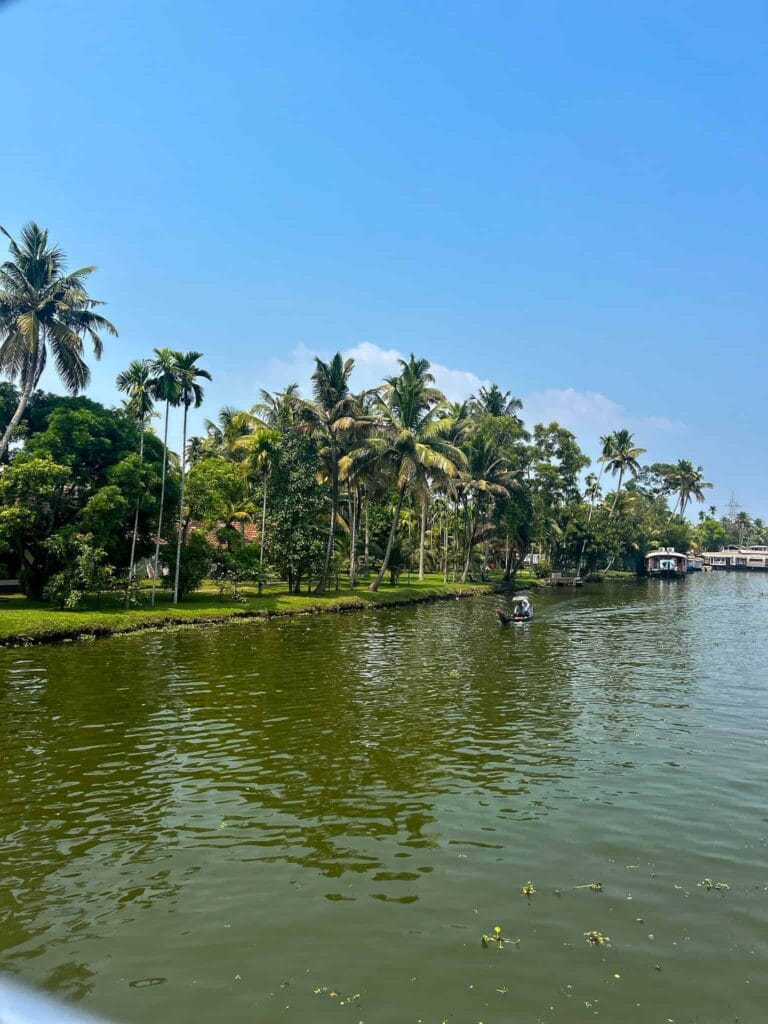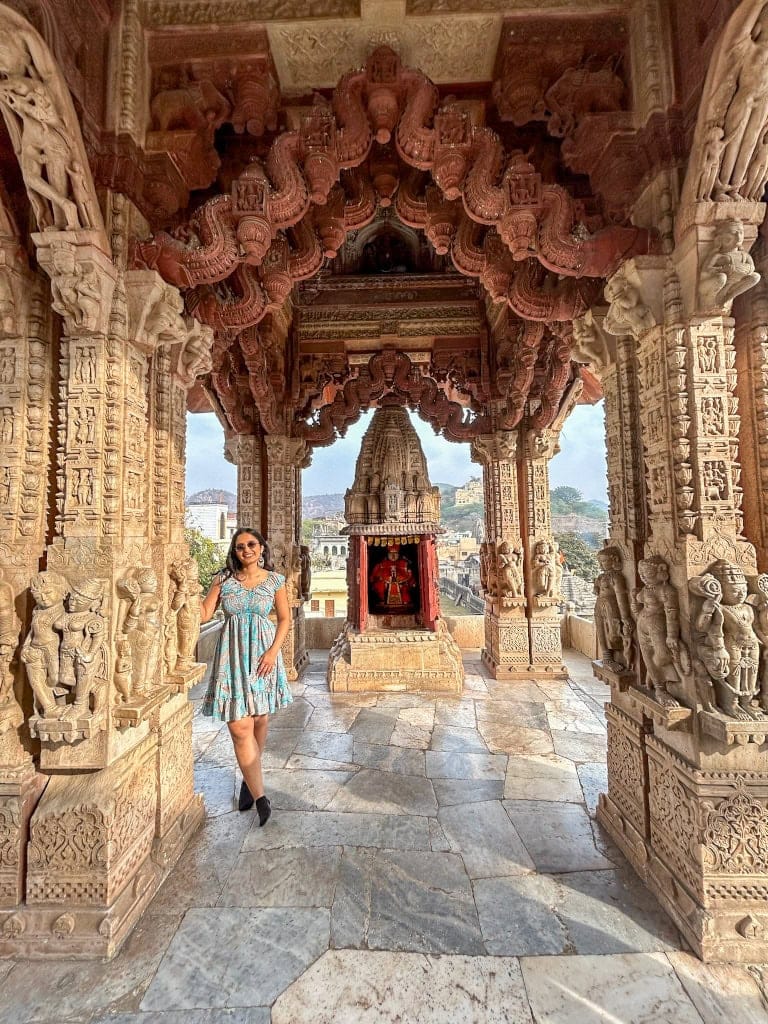How to Book Indian Trains as a Foreign Tourist (2025 Guide to IRCTC & 12Go)
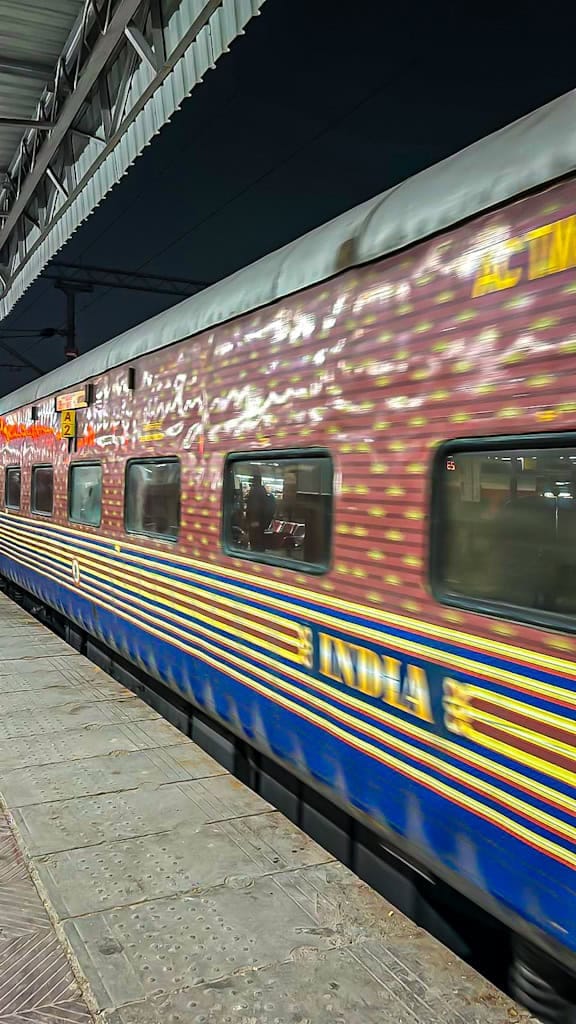
Taking an Indian train is, in itself, an adventure and part of many travel bucket lists when visiting the country.
The experience can, at times, be a culture shock to some, especially for travellers from Western countries. The hustle and bustle, trains that seemingly go on forever, and the constant flow of activity on and off the train can be daunting, but don’t let that put you off. Travelling on Indian trains is a rite of passage for any foreign traveller wanting to traverse the vast country and see all its amazing sights. You might even end up loving it, like we did!
In this complete guide to Indian train travel for tourists, we’ll cover: how to book train tickets online as a foreigner (with IRCTC or 12Go), how to choose the right train and class for you (1AC, 2AC, Sleeper) and insider tips to make your journey comfortable, safe, and enjoyable. Whether you’re planning a short trip between cities or an overnight sleeper, this guide will help you navigate the Indian railway system with confidence.
Why Train Travel in India is Amazing (and What Every Tourist Should Know Before Booking)
Train Travel vs Flights in India
As mentioned, we love travelling by train in India. It’s our most used mode of transport, and we recommend it to anyone looking to plan their own India itinerary.
It is more comfortable than a coach, cheaper and more straightforward than flying and less exhausting than driving.
In particular, travelling by overnight sleeper train really allows you to get the most out of your trip. By getting on at night in one city (e.g Udaipur), and arriving early morning in another (e.g Jaipur), you minimise the time ‘lost’ in transit, giving you more time to explore. Also, as an added bonus, you save a night’s accommodation cost as well!
The Magic of Indian Trains
But beyond the logic, getting the train is also simply the best experience.
India, as a country, is one that you can only really get the best out of by immersing yourself in it as much as possible. That’s much easier to do via rail than thousands of feet in the air in a plane.
Embrace the chaos of Indian railway stations, with people everywhere, incredible food and snacks filling every stall and the smell of fresh chai passing you by.
Then, once onboard, you’ll see a whole new side to train travel. The rhythmic clatter of the wheels, the mix of passengers from so many walks of life, and the constant activity along the corridors make each journey unique. You’ll see friends sharing meals, families playing cards, and vendors making their way through the carriages offering snacks, chai, and local treats. It’s a vibrant snapshot of everyday life in India that you just can’t experience any other way.
For tourists, it is more than just A to B; it’s a moving window into the country’s culture, people, and landscape. Whether you’re getting a glimpse of the sunrise over a desert in Rajasthan, passing lush green nature in Kerala, or taking in the life of villages along the railway line, travelling by train gives you a front-row seat to India’s incredible diversity.
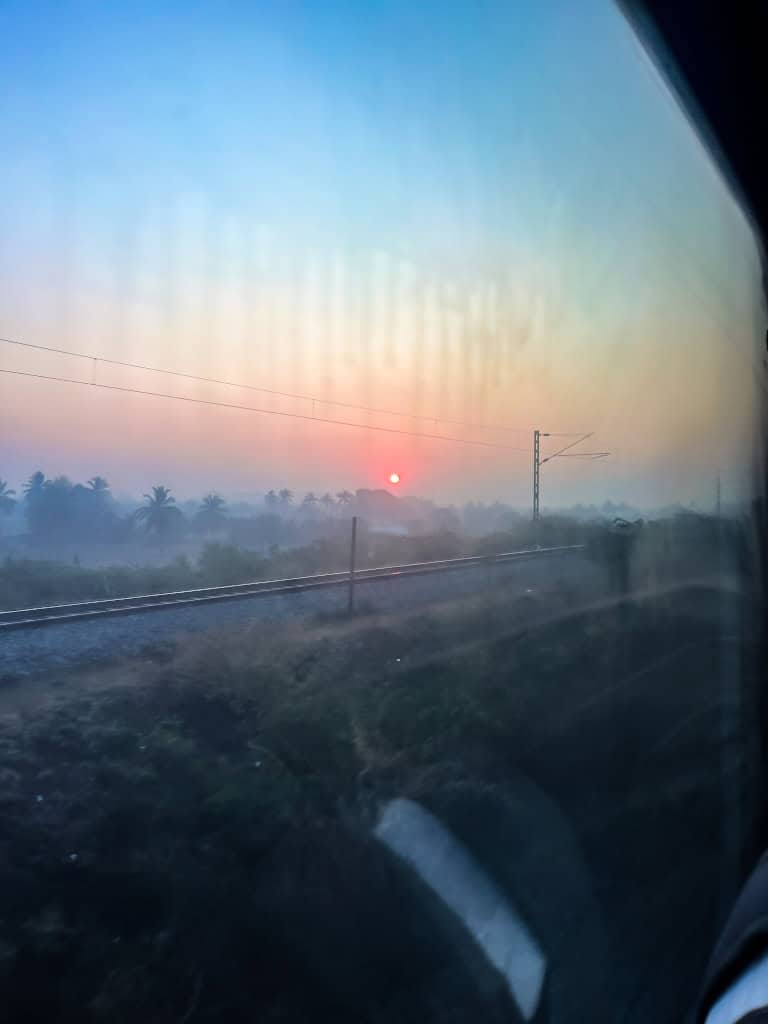
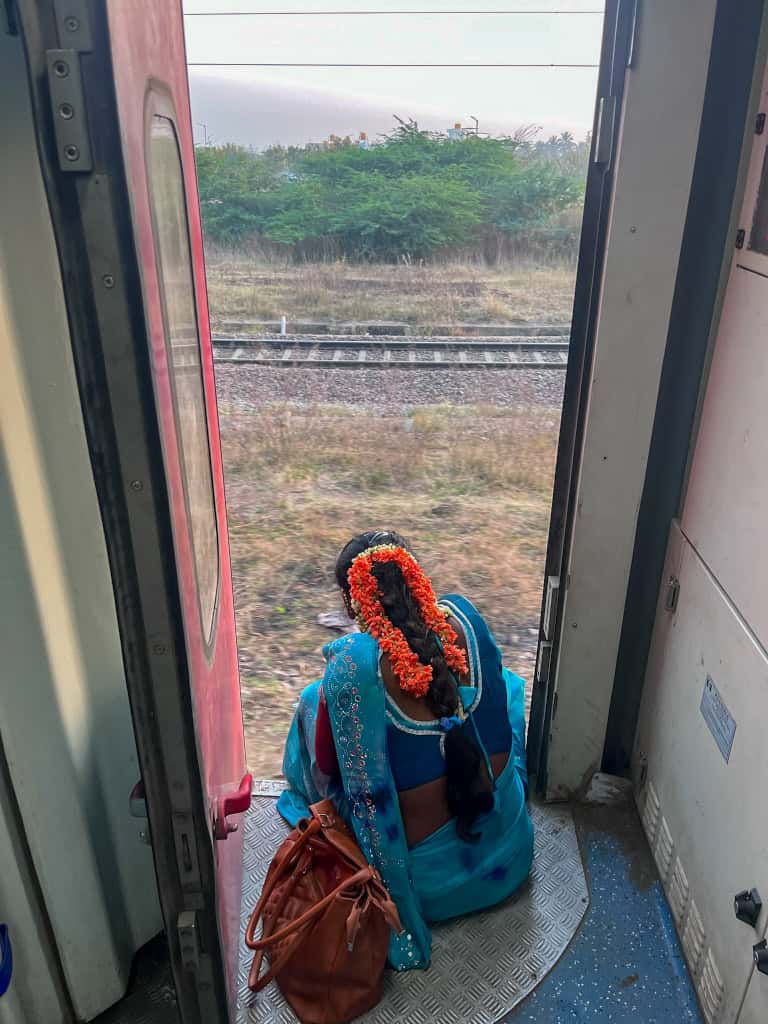
It’s not always plain sailing…or railing
There are plenty of great things about Indian train travel, but that’s not to say there aren’t occasional downsides too.
To name a few, you might need to be wary of:
- Delayed and infrequent trains: Unlike in Europe, where several trains an hour run between major destinations, in India, trains run across the entire country,and sometimes only a few per day may go where you need. Delays are also common; we once got on a train that was 18 hours delayed(!) after our train was also delayed by a few hours.
- Confusing Stations: It can be tricky to work out what platform or train you need to head to, and with massive queues at ticket booths, getting station staff’s help isn’t straightforward. Sometimes your fellow passengers know best, so don’t be afraid to ask.
- The Toilets!:We’re not going to pretend that we’ve always had a good experience with trains on Indian toilets. Some of them are, well, pretty disgusting. But there are some ways to make them bearable, as we’ll explain later.
- Buying the tickets: Buying Indian train tickets as a tourist is overly complicated, and the internet isn’t very clear on the best approach. From problems with creating accounts to using foreign payment cards, the system can be very frustrating.
However, by following our Indian train tips, we’re confident you’ll be able to minimise those issues and have a great journey.
How To Choose The Best Train In India For Your Trip
Check Punctuality and Past Performance with eTrain
One of the key things to do when planning an India itinerary is to plan your train travel ahead of time.
It is important to see that not only does the train go where you want at the time you want, but also that it is reliable and not regularly delayed, and that it has the train class that’s best for you (more on that later).
For this, I recommend https://etrain.info/
This site allows you to search for your journey and will show all trains that take that route, including:
- The day those trains run
- The departure and arrival times
- Available class types
- Running history (how often is the service cancelled or delayed)
It’s this last point that is most valuable. Trains in India are often delayed, and by looking at previous data, you can minimise the chance of those delays majorly affecting your trip.
Take these examples below, these are both trains running to Mumbai, the first is on average 25 minutes late and 75% of the time it is within 15 minutes of its scheduled arrival. The one on the right is on average nearly 3 hours late, and 64% of the time it is over an hour late. Therefore, it’s obvious which one is the better option to fit into your India trip schedule.
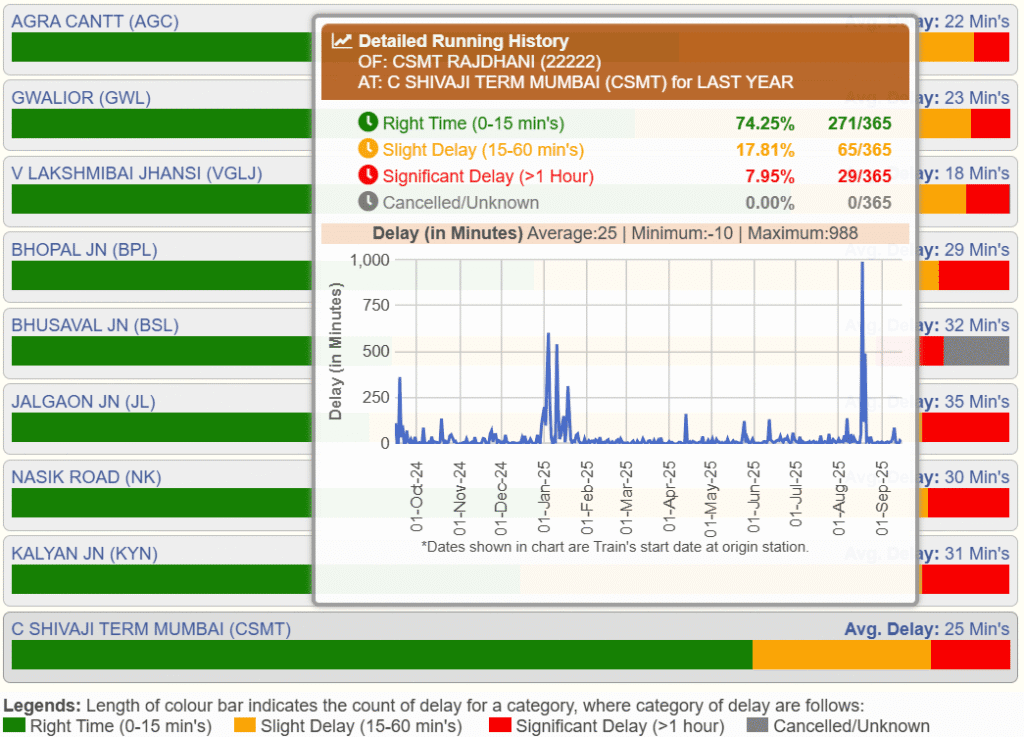
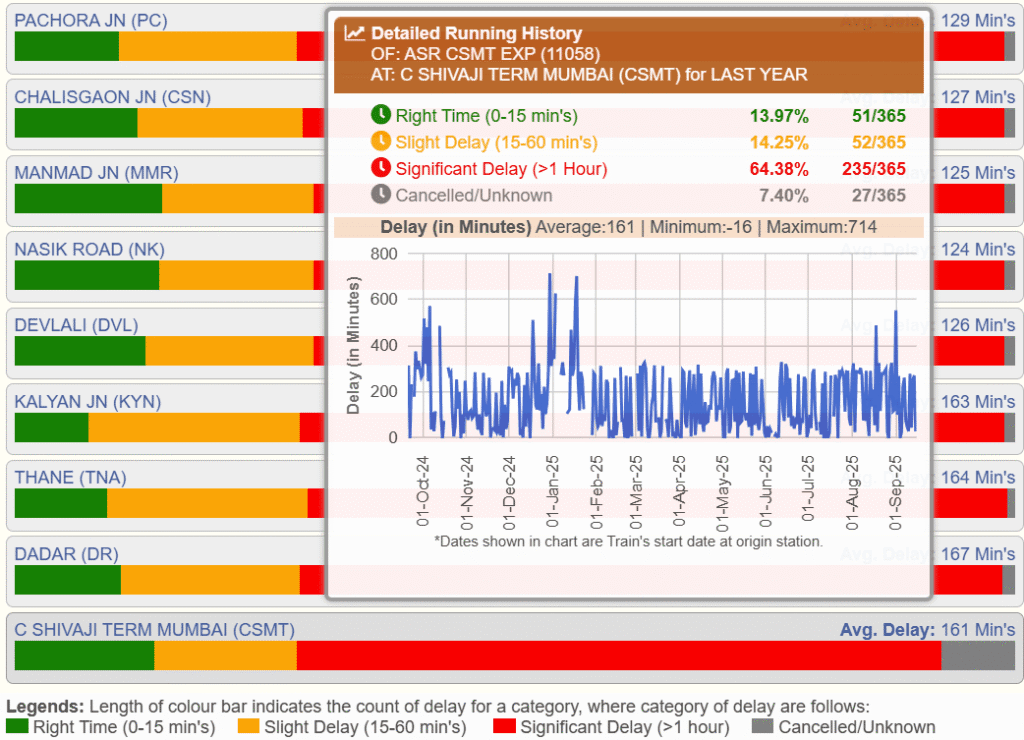
Recommended Trains For Popular Routes
As mentioned, we have travelled by train frequently on our trip across India. These are some examples that we found that were at convenient times, reliable and had first class (1AC) carriages:
- Ranthambore to Udaipur: 23:03 MEWAR EXPRESS 12963 (Also from Delhi & Mathura)
- Udaipur to Jaipur: 22:10 UDZ KURJ EXP 19666
- Bangalore to Hampi: 21:50 HAMPI EXP 16592 (Also 16591 return Hampi to Mysore)
- Bangalore to Goa (Karwar): 18:50 PANCHAGANGA EXP (16595) *Amazing views*
Indian Train Classes Explained For Foreign Tourists
This was the most confusing thing for us when we started looking at booking our trains – figuring out what the different train classes mean and which is the best train class in India for tourists. But actually, it’s pretty straightforward.
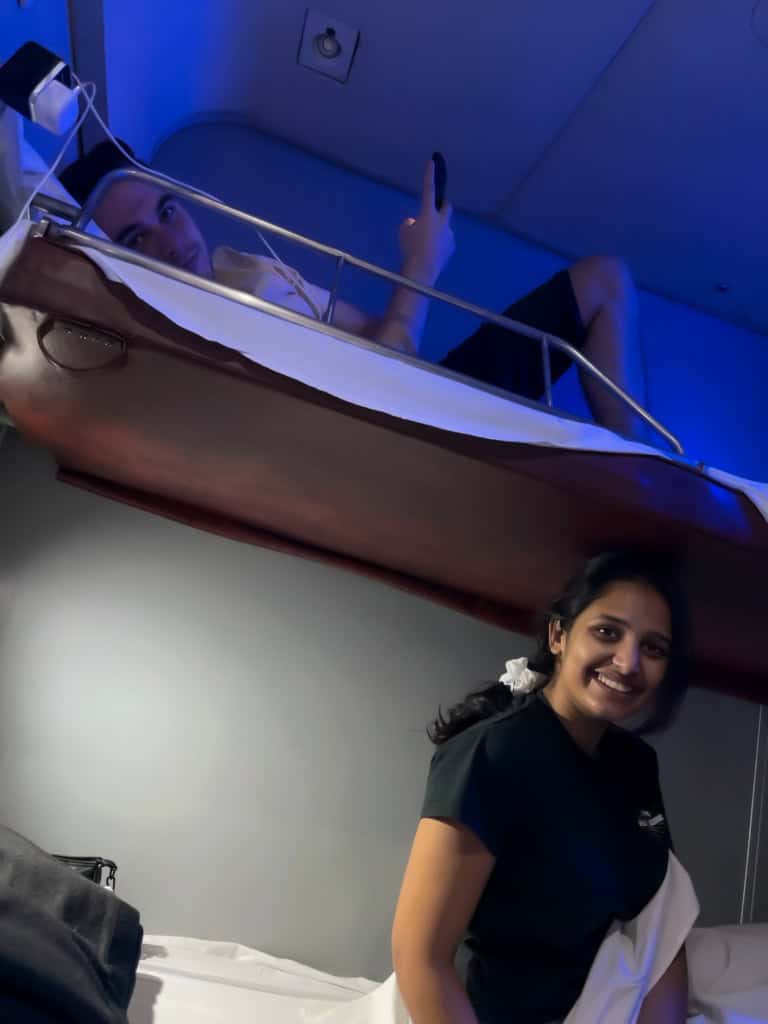
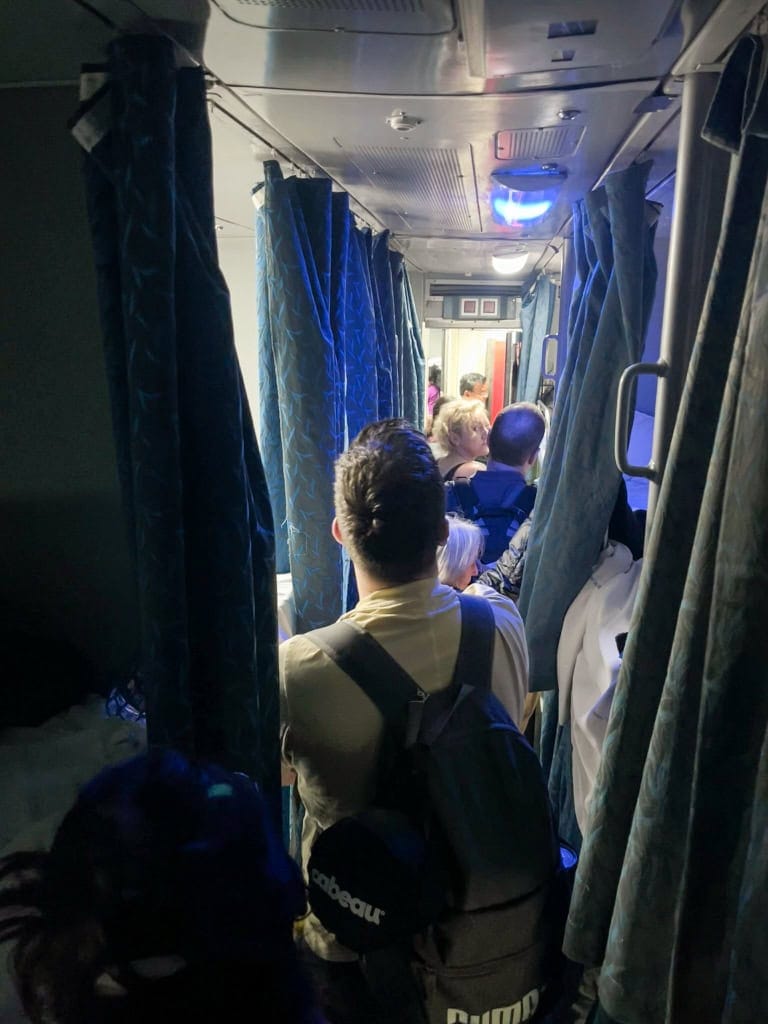
Air Conditioned Classes (1AC vs 2AC vs 3AC)
These are the Indian train classes you’ll most likely want to travel in, as they provide the most comfort and are good value for money, especially in comparison to trains in Western countries.
1AC
1AC is first class in India. Here you can expect a lockable room, either containing 2 (coupe) or 4 (cabin). The 2 beds are single-bunk-bed style and are reasonably comfortable. You get fresh pillows and sheets provided too.
There are often only 8-20 1AC spaces per intercity train, so book in advance if you can.
The added bonus is that having so few people in this compartment means the toilets are (relatively) cleaner compared to other classes.
Pros: Most private and safe, best chance of sleep, cleanest toilets
Cons: Most expensive, a little isolated if you want the Indian train experience
2AC
In 2AC, each ‘section’ has a cabin 4-bed layout with a small coupe-style 2-bed bunk on the other side of the corridor.
The main difference compared to 1AC is that it is less private. Instead of a lockable door, each ‘section’ has a curtain to pull across. Bedding is also provided as in 1AC.
2AC is the class that most upper-class Indians who travel by train choose due to its value for money and relative comfort over other carriages.
Pros: Still only 2 or 4 beds per section, not as crowded or loud as the lower classes, more authentic experience than first class, good value for money
Cons: Less chance of good sleep compared to 1AC, need to be more aware of your safety and luggage as no lock or door
3AC
3AC is basically 2AC, but instead of a 2 or 4 bunk bed layout, it has a 3 or 6 bed. So slightly busier and potentially claustrophobic.
Because of the extra beds, it is also louder as there are more people. You also tend to get more families rather than the business travellers found in 2AC. Trying to sleep with children in your cabin is not always easy.
Although a step up from non-AC, it lacks in comfort compared to 2AC. Unless on a serious budget trip, the value for money doesn’t seem to be there, as it is not too much cheaper.
Pros: Get bedding provided, a curtain for relative privacy and air conditioning
Cons: Busy, loud and a chance of lack of sleep compared to 1AC and 2AC, not much cheaper than 2AC
Other Classes (Sleeper Class and Chairs)
Sleeper Class
Don’t get confused, but sleeper class is not the only class that has beds (all the AC classes above do); it is actually the least comfortable of all the bed classes.
There’s no air conditioning, only ceiling fans. No curtains for privacy. Not even windows, just bars to keep people out.
This is still the most common class found on Indian trains, but for most foreign tourists it’s not one we’d recommend, especially if you want to get some rest.
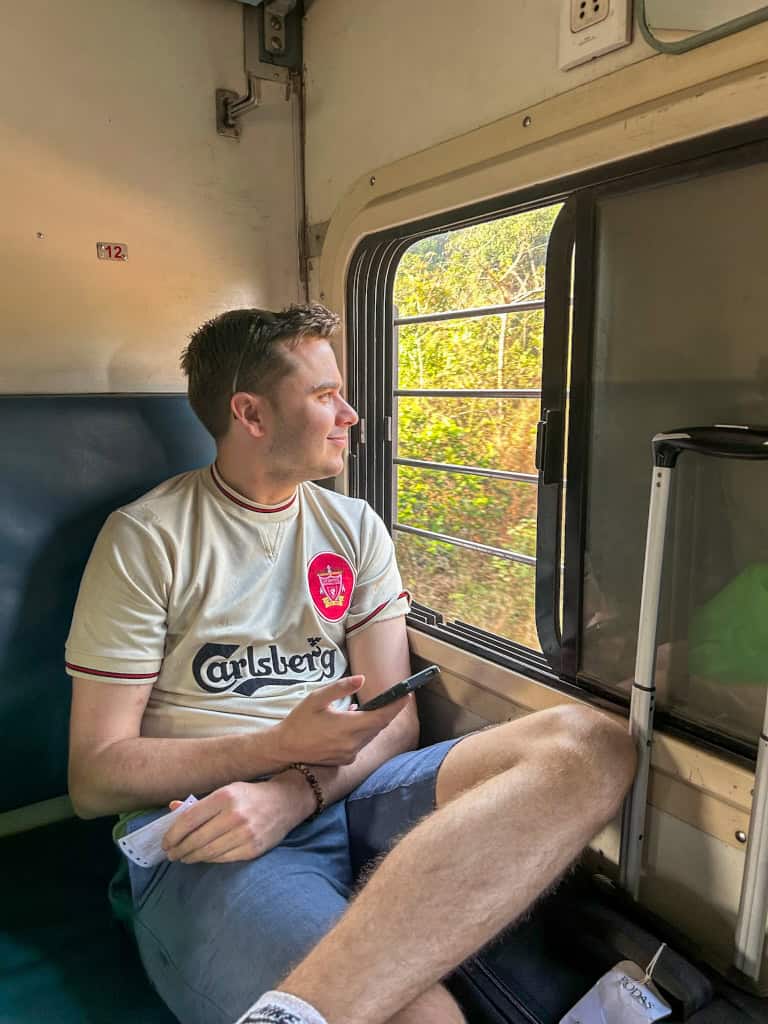
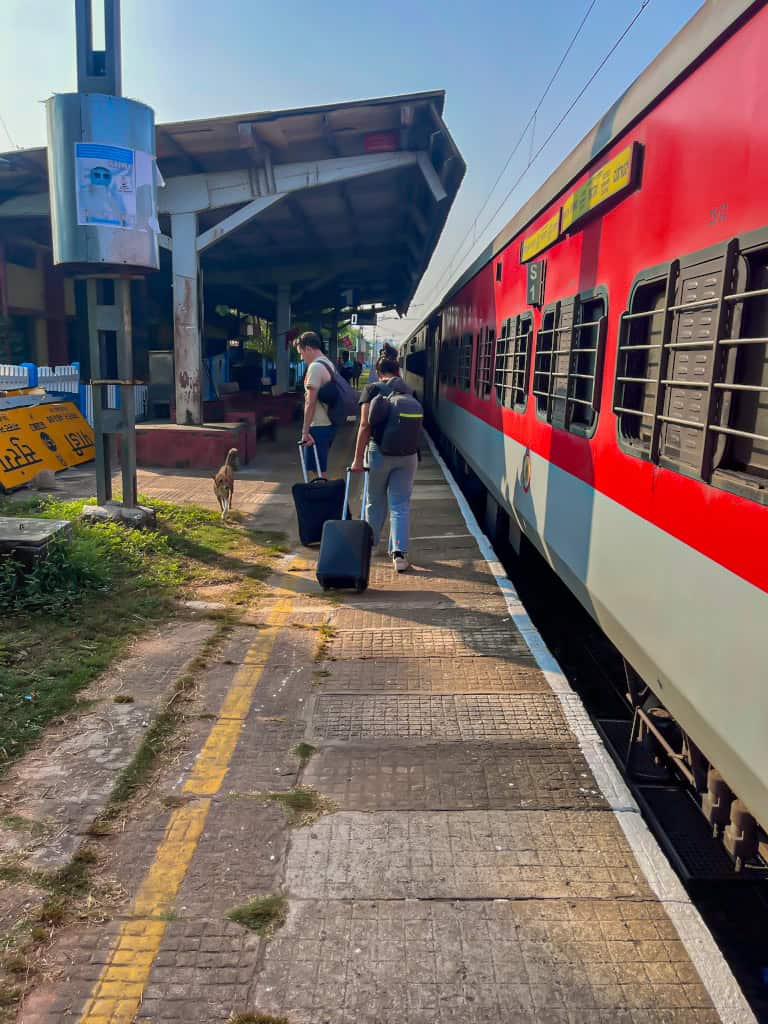
Chair Car
Similar to seats most often found in Western trains. Airline-style seats, overhead space for suitcases and clean toilets.
These are ideal for short intercity trains or taking a day trip.
There are AC and non-AC versions as well as ‘Executive’ Chair Car, which are more modern, spacious and clean.
Our Train Recommendations
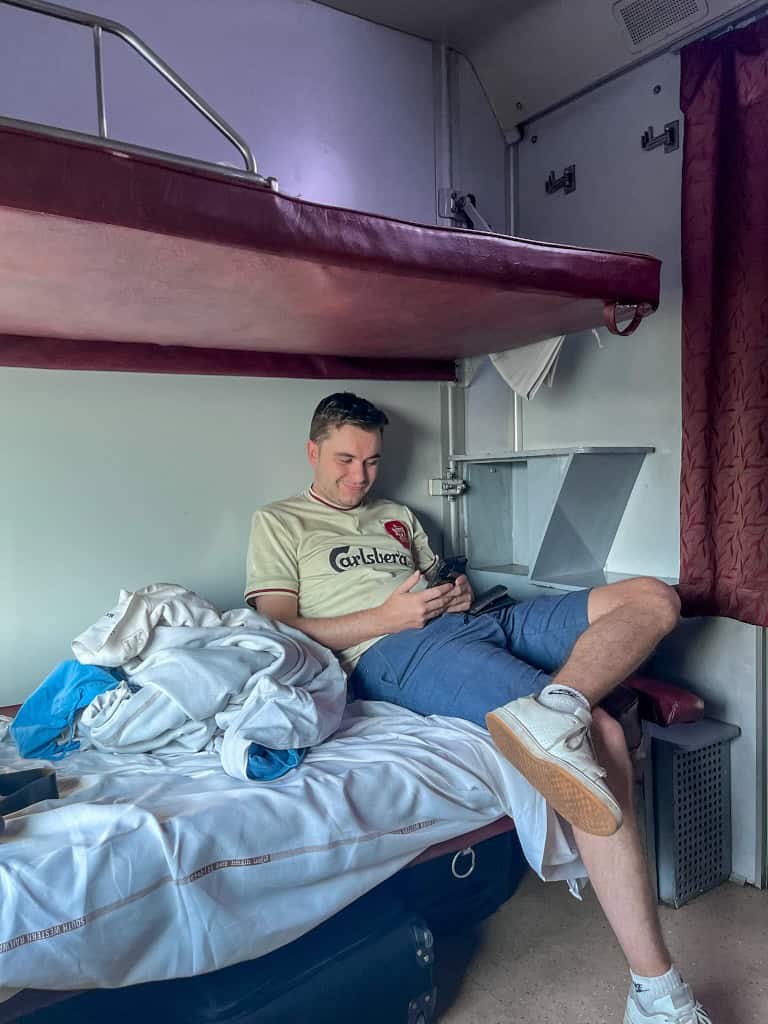
Overall, we would recommend 1AC for overnight travel if you want to focus on being well-rested for the next day’s sightseeing. Hope for a coupe if travelling as a couple (or just 2 of you) or a cabin if solo travelling or as a group. 2AC is an adequate option if 1AC is sold out or not available on your favoured train.
For shorter journeys, 2AC gives you a flavour of a more authentic indian train experience without needing to worry too much about sleep or toilet cleanliness.
Step-by-Step Guide to Booking Indian Trains as a Foreigner
Finally, how to actually book indian trains online as a tourist.
There are 2 main ways we’ll talk you through, the official and cheapest way (IRCTC) and the easier but more expensive way (12go).
How to Book Indian Train Tickets With 12Go.com
12Go is the main third-party travel provider for trains in South and Southeast Asia. We’ve used them many times and they are very reliable.
It is super simple, just search your journey, find your train, select your class and book.
You can pay with foreign credit cards or debit cards, and you can even pay with PayPal (for a fee) for full peace of mind.
The negatives of using 12Go are that they charge a commission, so it is more expensive than booking tickets directly.
Also, not all train services are available on their website; often, only around half are shown, so you may be a little restricted if the one you want to travel on is not there.
If you do use 12Go, consider using our link as we will get a small amount of commission (at no extra cost to you): 12Go.com
How To Book Train Tickets On IRCTC As A Foreigner
IRCTC is India Railways’ official booking platform, and the website can be a little difficult to get used to at first.
The first, and most challenging thing to do is register. You’ll need to give your phone number and email to receive an OTP (One-Time Password) to verify your account. We found that the phone number only receives the OTP if it is an Indian number and not a foreign number. However, you should receive your OTP via email, but it may take up to 48 hours. Any longer than this, and try re-registering.
To complete registration, you need to pay a 100 rupee (approx £1) charge. To pay, you need to use the PayU option when asked for a payment method, as this is the only option that allows foreign cards.
After this, you can search for your journey as normal. Find your train and select your chosen class.
It will show the number of tickets left for that class in that train, e.g. Available – 0015. Or it will show that it’s sold out and let you join a waiting list.
To pay, you will once again need to use the PayU option to use your foreign credit cards.
As mentioned, this is the cheaper option with more options if you’re willing to go through the hassle of registering.
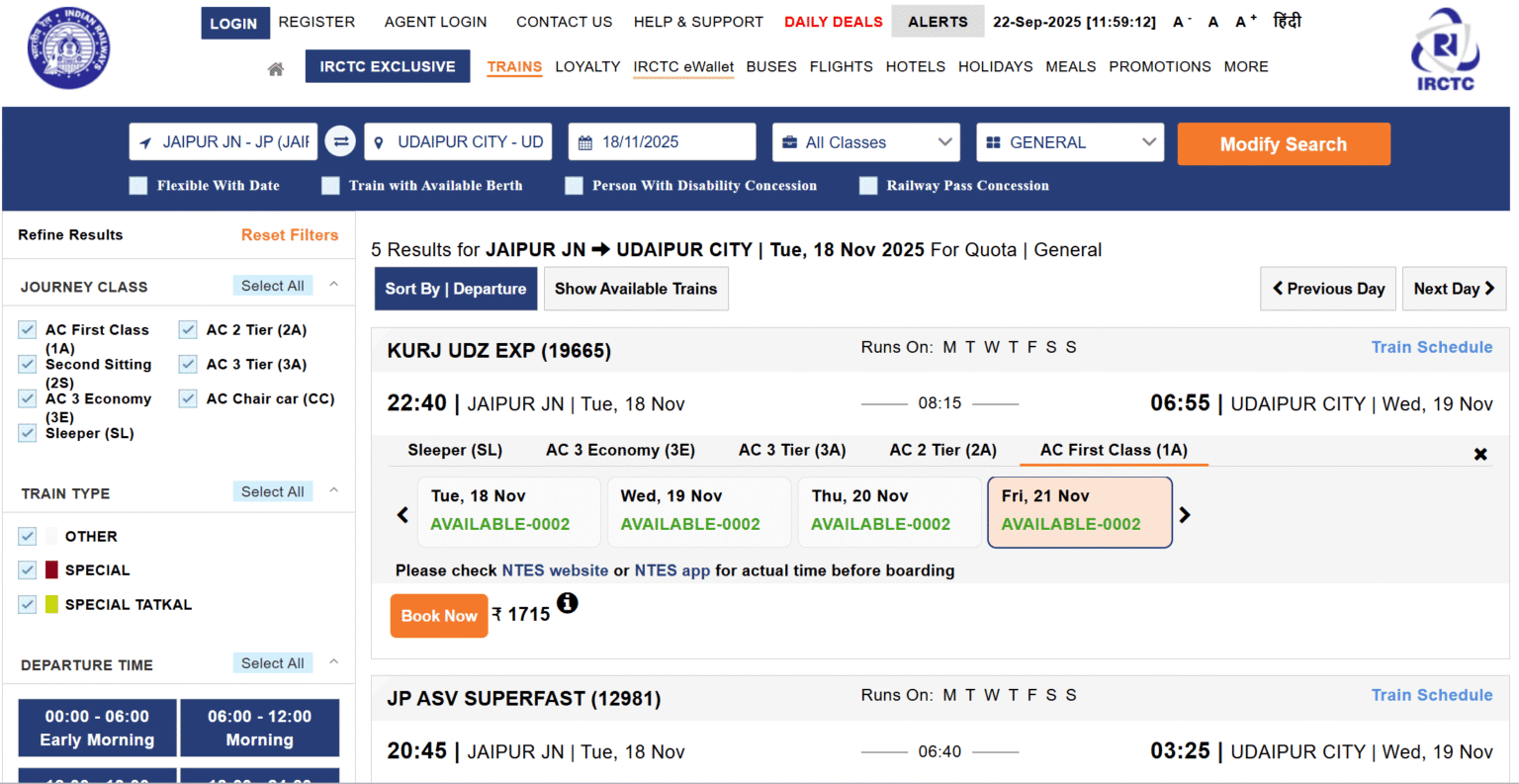
Essential Tips For Smooth Train Travel In India
Once you’ve booked your train tickets, following these tips will allow you to have the best experience (and avoid some of the mistakes we made):
- Track your train status on etrain.info: As mentioned, etrain is great for choosing the right train, but it is also valuable for checking if your train is on time, both before and after you board, so you can see if you should you should head to the station or plan your onward journey. Just search your train and select ‘Running Status’.
- Try Indian Railway snacks: Every station platform will have at least one confectionery stand, so get an authentic experience and try something new for your journey. Our favourites were ‘Uncle Chips’, ‘Lays Magic Masala’ crisps, ‘Jim Jam’ and ‘Hide & Seek’ cookies, any chocolate cake and of course a cup of chai.
- Take toilet paper and Imodium with you: As mentioned, the toilets are sometimes not the best. Always take toilet roll in case they run out (and to put on the seat to sit down on). Imodium can be helpful if you want to avoid the toilet for long periods, especially if you have ‘Delhi belly’.
- Arrive early at the station: If your train is on schedule, then arrive early, as many stations, especially in major cities like Delhi, Mumbai and Bangalore, are massive and quite confusing to get around. Give yourself time to navigate and avoid stress.
- Find where your carriage will be: Indian trains are super long, sometimes over 20 carriages. Use the overhead coach display boards on the platform and match it to what’s on your ticket to find where you will need to get on and avoid the rush. E.g. A1, B1, etc.
- Pack overnight essentials: To get a good night’s sleep, we recommend earplugs and an eye mask as the trains can be loud with track noise and your fellow passengers.
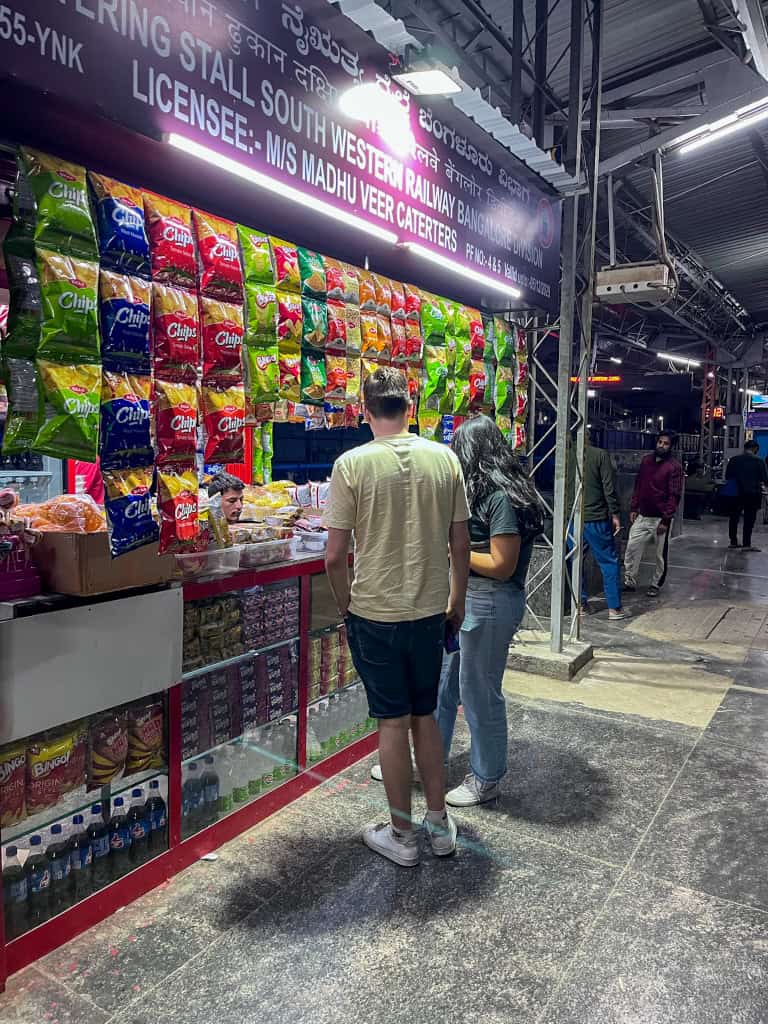
Frequently Asked Questions About Indian Train Travel For Tourists
Can foreigners book Indian train tickets online?
Yes, tourists can book Indian train tickets online either through the official IRCTC website or apps like 12Go. IRCTC is cheaper but requires registration, 12Go is simpler but charges a small fee.
Do I need an account to book Indian train tickets?
Yes, if you use IRCTC, you’ll need to create an account, including verifying with an email OTP. Third-party sites like 12Go don’t require this.
Can I pay for Indian train tickets with a foreign credit card?
Yes, but not always directly on IRCTC. Most foreigners can use the PayU option for payments. On 12Go, foreign cards and PayPal are accepted.
How far in advance can I book Indian Trains?
Bookings on IRCTC usually open 120 days before departure. For popular routes like Delhi to Agra or overnight trains in Rajasthan, book as early as possible.
Which is the best train class for tourists in India?
For overnight journeys, 1AC is the most private and comfortable, while 2AC offers a balance of comfort and value, and Sleeper Class is not recommended for first-time tourists in India.
Are Indian trains safe for foreign tourists?
Yes, Indian trains are generally safe. Keep valuables close, lock your luggage on overnight trains for extra peace of mind, and travel in AC1 class for extra security.
Ideally, don’t bring too much luggage with you on trains because of the shared space. For tips on how to pack light, see our guide on what to pack for an India trip.
What should I pack for an Indian train journey?
Essentials include toilet paper, Imodium, snacks, a water bottle, earplugs, hand sanitiser and small change for food and chai vendors.
Do Indian trains run on time?
Delays are common, especially on long-distance routes. Always check the live running status on eTrain before booking and when leaving for the station.
Is food available on Indian trains?
Yes, most long-distance trains have hot food available to buy, and vendors sell chai, snacks, and meals onboard. You can even order McDonald’s on to the platform. For a more authentic experience, try snacks from station platforms.
Have A Great Indian Train Experience
We hope that by following this guide, you’ll be able to have many magical journeys across India on your trip, just like we did.
Lots of things in India, such as train travel as a tourist, can feel overcomplicated and stressful, but that is also sometimes part of the charm, and when you go, you’ll realise it was worth it.
Have you travelled by train in India? Let us know in the comments below how you found it.
To see where we took trains in India, see our Rajasthan Itinerary and follow in our footsteps across the ‘Land of Kings’.
